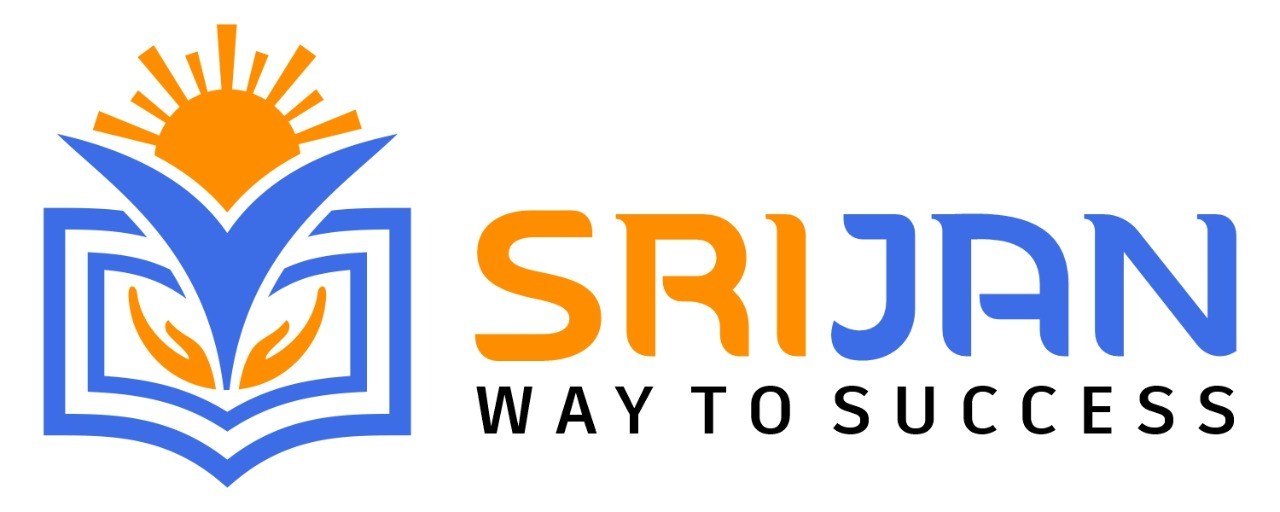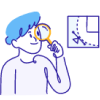Learn SAP PP/DS: Improve Resource Utilization and Production Flow
SAP PPDS Training || SAP PPDS certification Training || SAP PPDS Online training || SAP PPDS self-paced training || SAP PPDS Instructor-Led training
Key Features of Training:
- 30 Hrs Instructor-led Training
- Mock Interview Session
- Project Work & Exercises
- Flexible Schedule
- 24 x 7 Lifetime Support & Access
- Certification and Job Assistance
SAP PPDS(Production Planning and Detailed Scheduling):
SAP PPDS (Production Planning and Detailed Scheduling) is a software module within the SAP ERP (Enterprise Resource Planning) system designed to optimize and streamline production processes in manufacturing industries. It enables businesses to plan, schedule, and execute their production operations more efficiently. PPDS offers comprehensive tools for creating production plans that consider various factors such as resource availability, material constraints, and demand fluctuations. It allows for detailed scheduling, taking into account machine capacities, labor availability, and other resources to ensure optimal production sequences.
Prerequisites: Who can attend SAP PPDS Training?
- Production and Manufacturing Background
- SAP ERP Foundation
- Computer Skills
- Access to SAP System
- Educational Background
- Good Communication Skills
Responsibilities of SAP PPDS Consultant:
- Requirements Gathering
- System Configuration
- Integration
- Customization
- Testing
- Training
Course Benefits:
- Job opportunities
- Promotion opportunities (Salary Hike)
- Increased productivity
- Improved decision-making
- Gain in-demand skills
What is the future of SAP PPDS Consultant?
- Increased Demand for Digital Transformation
- Integration with SAP S/4HANA
- AI and Predictive Analytics
- Cloud-Based Solutions
- Supply Chain Resilience
The fee for SAP PPDS(Production Planning and Detailed Scheduling) training can vary depending on several factors such as the location, duration of the course, training format, and level of expertise. SAP offers various training options for PPDS, including instructor-led courses, e-learning courses, and virtual live classrooms.
For More details you can Register Sign Up
SAP PPDS(Production Planning and Detailed Scheduling) Certification FAQ's:
1. What is SAP PPDS certification?
SAP PPDS certification is a formal recognition of your expertise in using SAP's Production Planning and Detailed Scheduling module. It validates your skills in planning and scheduling production processes using SAP software.
2. Why should I get SAP PPDS certified?
Certification demonstrates your proficiency and knowledge of SAP PPDS, which can enhance your career prospects in the field of production planning and scheduling. It can also improve your job opportunities and earning potential.
3. What are the prerequisites for SAP PPDS certification?
The prerequisites for SAP PPDS certification may vary depending on the specific certification level (e.g., associate or professional). Typically, you would need to have some experience working with SAP PPDS and may need to complete SAP training courses related to PPDS.
4. How can I prepare for SAP PPDS certification?
To prepare for SAP PPDS certification, you can:
- Attend SAP training courses dedicated to PPDS.
- Study SAP PPDS documentation and materials.
- Practice with hands-on exercises and scenarios.
- Take practice exams to assess your readiness.
5. Where can I take the SAP PPDS certification exam?
You can take the SAP PPDS certification exam at authorized SAP certification centers or through online proctoring services, depending on the options available in your region.
6. What is the format of the SAP PPDS certification exam?
The format of the exam may vary depending on the certification level and the specific certification you are pursuing (e.g., associate or professional). Typically, it includes a combination of multiple-choice questions, scenario-based questions, and hands-on exercises.
7. How much does SAP PPDS certification cost?
The cost of SAP PPDS certification can vary based on the certification level and location. You should check with SAP or an authorized training center for the most up-to-date pricing information.
8. How long is SAP PPDS certification valid?
SAP certifications are typically valid for two years. After that period, you may need to recertify by taking a new exam or fulfilling recertification requirements.
9. What is the passing score for SAP PPDS certification?
The passing score for SAP PPDS certification exams may vary, but it's typically around 65% to 70%. Be sure to check the specific passing score requirement for the exam you are taking.
10. Can I retake the SAP PPDS certification exam if I fail?
Yes, you can retake the exam if you do not pass on your first attempt. However, there may be waiting periods and additional fees for retaking the exam.
SAP PPDS(Production Planning and Detailed Scheduling) Certification:
SAP PPDS (Production Planning and Detailed Scheduling) certification is designed to validate your expertise in SAP's Production Planning and Detailed Scheduling module. However, certification details may have evolved since then. To get the most accurate and up-to-date information regarding SAP PPDS certification, including prerequisites, exam formats, and costs, I recommend visiting the official SAP certification website or contacting SAP's certification team directly. Here are some general guidelines that were applicable as of my last update:
- Certification Levels: SAP offers different levels of certification, including Associate, Professional, and Expert levels. SAP PPDS certification may be available at different levels to cater to varying levels of expertise.
Prerequisites: Prerequisites for SAP PPDS certification may include completing specific training courses, having hands-on experience with SAP PPDS, and meeting certain educational requirements. These prerequisites can vary depending on the certification level. - Training: SAP typically recommends that candidates undergo formal training through SAP's authorized training centers. These training courses are designed to prepare you for the certification exam.
- Exam Format: The certification exam for SAP PPDS may consist of multiple-choice questions, scenario-based questions, and hands-on exercises. The specific format and content of the exam can vary based on the certification level.
- Exam Registration: You can register for the certification exam through SAP's official certification website or authorized SAP training centers. Online proctored exams may also be available.
- Exam Fee: The cost of the certification exam can vary based on the certification level and location. It's essential to check the most current pricing information on the SAP certification website.
- Passing Score: To pass the certification exam, you typically need to achieve a specific passing score, which can vary from one exam to another. Be sure to check the passing score for the specific exam you plan to take.
- Certification Validity: SAP certifications are usually valid for a period of two years. After that time, you may need to recertify by either retaking the exam or fulfilling recertification requirements.
- Recertification: To maintain your SAP PPDS certification, you may need to participate in ongoing training, attend SAP conferences, or take recertification exams, depending on SAP's policies.
- Global Recognition: SAP certifications are globally recognized and can enhance your career prospects in the field of SAP and production planning.
SAP PPDS(Production Planning and Detailed Scheduling) Curriculum:
Introduction and Course Overview
- Introduction
- The Role of APO-PPDS in Supply Chain Planning
- Master Data Overview
Demand Management
- Planned Independent Requirements and Sales Orders
- Make-to-Stock Production
- Make-to-Order Production
Production Planning
- Prerequisites and Basic Settings
- The Planning Process
- Heuristics for Material Requirements Planning
- Firming
Steps in Production Planning
- Introduction
- Net Requirements Calculation and Lot-size Calculation
- Source Determination
- PPM/PDS Explosion and Scheduling
- Pegging
- Setup Times
- Enhancements for Production Planning Steps
Tools and Production Planning
- Product View
- Product Planning Table
- Product Overview
- Pegging Overview
- Days' Supplies
- Detailed Scheduling Planning Board
- Resource Planning Table
- PP/DS Optimizer
Additional Topics
- Detailed explanation on Master Recipe
- APO PPDS Configuration overview
SAP PPDS(Production Planning and Detailed Scheduling) Interview Questions and Answers:
1. What is SAP PPDS, and what is its primary purpose?
A: SAP PPDS stands for Production Planning and Detailed Scheduling. Its primary purpose is to support production planning and scheduling processes in manufacturing, helping companies optimize their production operations.
2. What are the key components of SAP PPDS?
A: SAP PPDS comprises various components, including Master Data, Production Planning, Detailed Scheduling, Capacity Planning, and Integration with other SAP modules.
3. Explain the difference between Production Planning and Detailed Scheduling in SAP PPDS.
A: Production Planning focuses on high-level planning and rough-cut capacity planning, while Detailed Scheduling involves creating detailed production schedules considering resource constraints.
4. What is the purpose of the SAP PPDS Master Data?
A: Master Data in SAP PPDS includes information about products, resources, work centers, production versions, and transportation lanes. It is essential for accurate planning and scheduling.
5. What is the Bill of Materials (BOM) in SAP PPDS, and how is it used?
A: The BOM defines the structure of a product and its components. It is used to determine the materials required for production and their relationships.
6. Explain the concept of the Product Master in SAP PPDS.
A: The Product Master contains information about products, including their properties, structures (BOMs), and production versions. It is crucial for production planning.
7. What is a Production Version in SAP PPDS?
A: A Production Version in SAP PPDS represents different methods or routings to produce a product. It helps in selecting the appropriate method during production planning.
8. What is the Capacity Planning function in SAP PPDS, and why is it important?
A: Capacity Planning in SAP PPDS ensures that production plans consider the available capacities of resources (work centers). It is vital to avoid overloading resources.
9. How does SAP PPDS integrate with other SAP modules like SAP ERP and SAP APO?
A: SAP PPDS can integrate with SAP ERP for order processing and SAP APO for advanced planning and optimization. It allows for seamless data exchange between these modules.
10. What is the PP/DS Optimizer, and how does it work?
A: The PP/DS Optimizer in SAP PPDS is a tool that optimizes production schedules by considering various constraints, such as resource capacities and material availability.
11. Explain the concept of Time-Based Scheduling in SAP PPDS.
A: Time-Based Scheduling is a scheduling technique in SAP PPDS that plans operations based on their start and end times while considering resource constraints.
12. What is Forward Scheduling in SAP PPDS?
A: Forward Scheduling starts scheduling from the earliest possible start date and proceeds in a forward direction. It ensures that operations are completed as soon as possible.
13. What are Heuristics in SAP PPDS, and how are they used in production planning?
A: Heuristics are planning algorithms in SAP PPDS used to create feasible production schedules. They help in finding practical solutions quickly.
14. Explain the concept of Pegging in SAP PPDS.
A: Pegging is the process of linking dependent demands and supplies. In SAP PPDS, it helps in tracing the relationships between production orders, materials, and components.
15. What is Capacity Overload in SAP PPDS, and how can it be resolved?
A: Capacity Overload occurs when the planned workload exceeds the available resource capacities. It can be resolved by rescheduling, shifting, or adding resources.
16. How does SAP PPDS handle Material Availability Check (ATP - Available-to-Promise)?
A: SAP PPDS checks material availability to ensure that required materials are available when needed for production. It considers stock, reservations, and purchase orders.
17. What is the difference between Make-to-Order (MTO) and Make-to-Stock (MTS) production in SAP PPDS?
A: MTO produces items based on specific customer orders, while MTS produces items for stock without specific customer orders.
18. What are the key performance indicators (KPIs) used to measure the effectiveness of SAP PPDS?
A: KPIs in SAP PPDS include adherence to schedule, resource utilization, production efficiency, and on-time delivery.
19. How can you model multi-level production processes in SAP PPDS?
A: Multi-level production processes can be modeled using Bill of Materials (BOM) structures and production versions, which define how products are manufactured.
20. Explain the concept of Sequence Dependent Setups in SAP PPDS.
A: Sequence Dependent Setups refer to the time required to change over a resource from producing one product to another. SAP PPDS considers these setup times during scheduling.
21. What is the significance of Lead Time in SAP PPDS, and how is it calculated?
A: Lead Time represents the time required to complete an operation or produce a product. It is calculated based on resource capacities, setup times, and processing times.
22. What is the SAP PPDS Horizon and how does it affect scheduling?
A: The PPDS Horizon is the planning period within which scheduling takes place. It impacts how far into the future the system plans and schedules production.
23. How does SAP PPDS handle Demand Management and Forecasting?
A: SAP PPDS can integrate with demand management and forecasting tools to align production plans with customer demand.
24. Explain the concept of Finite and Infinite Scheduling in SAP PPDS.
A: Finite Scheduling considers resource constraints and available capacities when creating schedules. Infinite Scheduling ignores resource constraints and schedules based on ideal conditions.
25. What is the purpose of Long-Term Planning (LTP) in SAP PPDS?
A: Long-Term Planning in SAP PPDS helps in strategic capacity and demand planning over an extended time frame, typically months or years.
26. How can you handle Resource Breakdowns or Downtime in SAP PPDS schedules?
A: Resource Breakdowns or Downtime can be managed by considering them in the scheduling process, rescheduling affected operations, or assigning alternative resources.
27. What are the different strategies for Optimizing Scheduling in SAP PPDS?
A: Optimization strategies in SAP PPDS include minimizing setup times, maximizing resource utilization, reducing lead times, and optimizing production sequences.
28. Explain the concept of Load Levelling in SAP PPDS.
A: Load Levelling aims to evenly distribute workload on resources to avoid capacity overloads and underutilization. It optimizes resource utilization in the long run.
29. How can SAP PPDS support Lean Manufacturing principles?
A: SAP PPDS can support Lean Manufacturing by minimizing waste, reducing inventory levels, and optimizing production flows through efficient scheduling and planning.
30. What are the key benefits of implementing SAP PPDS for a manufacturing organization?
A: Benefits include improved production efficiency, reduced lead times, better resource utilization, accurate demand planning, and enhanced customer satisfaction.
Participants will have 24/7 access to our online lab, providing hands-on experience with SAP PPDS tools and scenarios.
This includes server access to S/4 HANA 2023 for 1 year, ensuring you have ample time to practice and apply your skills in a real-world environment.
With this extended access, you can work on projects, explore advanced features, and solidify your understanding of SAP PPDS in the latest SAP S/4 HANA version.















